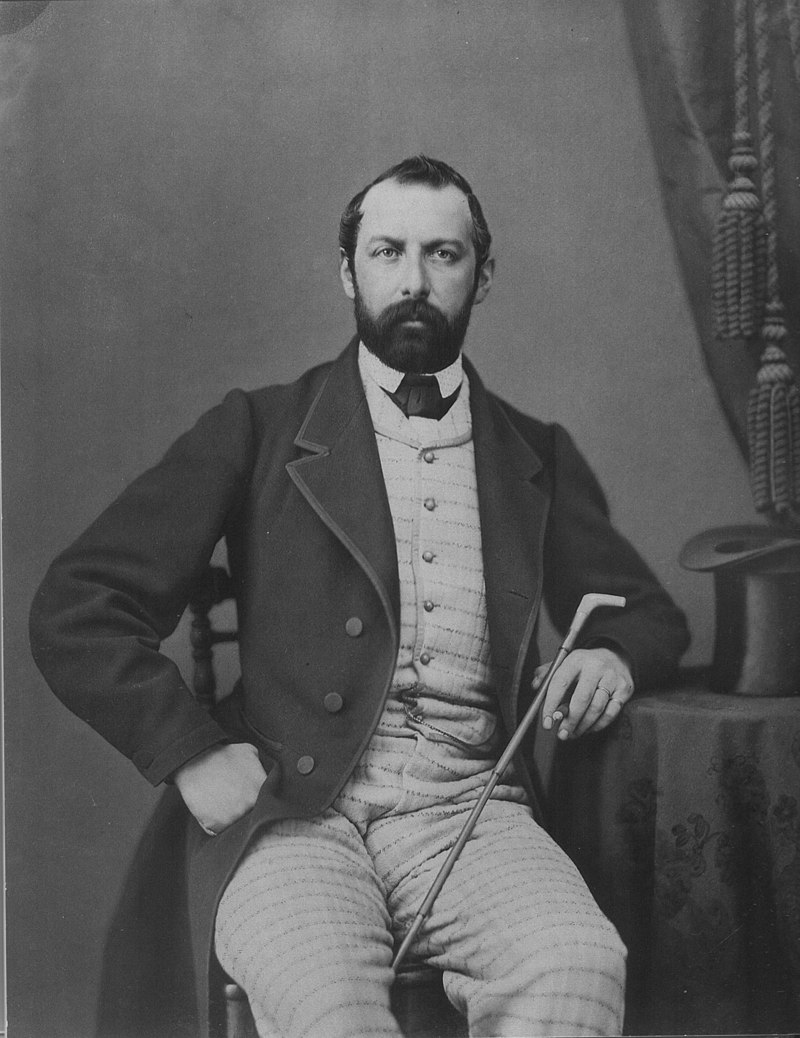
XV. Károly, full name Jenő Károly Lajos, was a Swedish royal prince from the Bernadotte house. He was born on May 3, 1826 in the Royal Palace in Stockholm, his father was King Oscar I of Sweden and his mother was Princess Joséphine de Beauharnais of Leuchtenberg. Károly was born as Duke of Skåne. After his father's death in 1859, Károly became the king of Sweden and Norway. He was crowned King of Sweden on May 3, 1860, and King of Norway on August 5. During his reign, the royal power gradually weakened, while the Riksdag and executive bodies became stronger. his rough manner raised doubts among many, but later he became a very popular ruler. In the second half of the 19th century, industrialization accelerated, and Károly also paid great attention to the development of infrastructure, during his reign many railways and canal networks were delivered, and a wide telegraph network was established. He was an enthusiastic supporter of the political and cultural cooperation of the three northern kingdoms, the so-called to Scandinavianism, and as such he promised support to Denmark in the 1864 Schleswig-Holstein conflict, but his ministers did not support him, so he could not provide actual help. 1850. on June 19, in Stockholm, he married the Dutch Royal Princess Lujza, the granddaughter of Dutch King William I. The couple were completely different in character and personality; Lujza adored her husband, while her husband preferred other women. Two children were born from their marriage: Lujza developed an intimate relationship with her daughter named Jozefina Eugenia (Lovisa Josefina Eugenia; 1851–1926), who later became the Danish king VIII. She became the wife of Frigyes. From their relationship was born the first ruler of the later independent Norway, VII. Haakon. Frigyes Károly Oszkár Vilmos (1852–1854) Duke of Sudermannia, who died at just over one year old after contracting measles, for which the doctors prescribed a cold water bath, so pneumonia eventually caused his death. Károly was known as an excellent hunter, sportsman and dancer was standing He suffered a hip sprain as a result of a fall, his injuries did not appear to be serious, but he died on September 18. Upon the death of King Károly in 1872, Oszkár inherited the throne as his son was not his heir. He was laid to rest in Riddarholmskyrkan, the usual burial place of Swedish kings. Although his direct descendants did not sit on the Swedish throne, through his daughter, his descendants also entered the royal families of Denmark, Luxembourg, Greece, Belgium and Norway.
XV. King Charles was the ruler of Norway and Sweden from 1859 to 1872. During its minting, it issued several coins, the most common of which were: The Swedish krona (Swedish: krona), which replaced the old Swedish riksdaler in 1873. The crown was divided into 100 öre and was made of silver, gold or bronze. The crown coins featured the king's portrait on the obverse, and the coat of arms and the year on the reverse. The value of the crown coins was 1, 2, 5, 10, 20 and 50 kroner. The Norwegian krone (Norwegian: krone), which also replaced the old Norwegian speciedaler in 1873. The Norwegian krone was also divided into 100 öre and, like the Swedish krone, was made of silver, gold or bronze. The Norwegian crown coins featured the king's portrait on the obverse, and the coat of arms and the year on the reverse. The value of the Norwegian krone coins was 1, 2, 5, 10, 20 and 50 krone. The Swedish riksdaler (Swedish: riksdaler), which was the currency before the Swedish krone. The riksdaler was divided into 48 skillings and was made of silver or gold. The riksdaler coins featured the king's portrait on the obverse, and the coat of arms and the year on the reverse. Riksdaler coins were worth 1/6, 1/4, 1/2, 1, 2 and 4 riksdaler. The Norwegian speciedaler (Norwegian: speciedaler), which was the currency before the Norwegian crown. The speciedaler was divided into 120 skillings and was made of silver or gold. The speciedaler coins featured the king's portrait on the obverse, and the coat of arms and the year on the reverse. The value of speciedaler coins was 1/5, 1/4, 1/2, 1, 2 and 4 speciedaler.
Numismatics. Online store for old money, coins and banknotes.